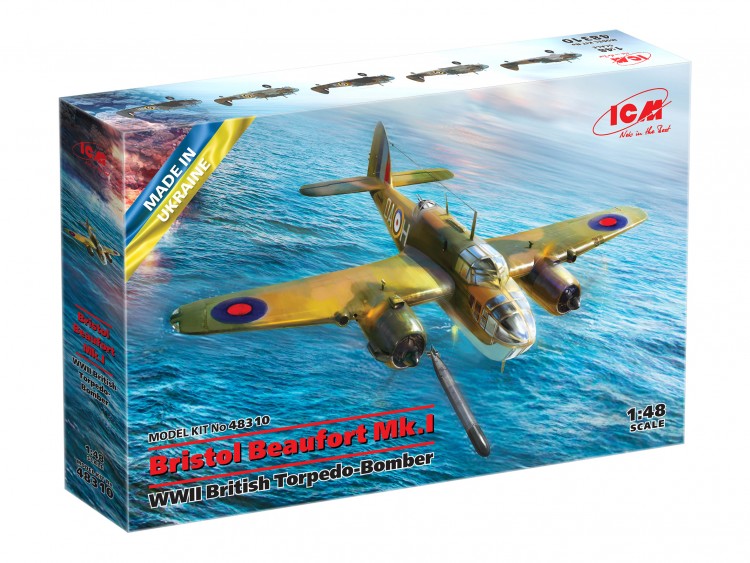ICM 48310 Bristol Beaufort Mk.I
Bristol Beaufort Mk.I
WWII British torpedo bomber
The geographical location of Great Britain led to increased attention of the Royal Air Force
to land-based seaplanes. The Bristol Beaufort, which began to enter service with the Coastal Command at the end of 1939, was a twin-engine naval torpedo bomber with a combat load
of up to 908 kg, and it could also perform reconnaissance operations. In the first modification – Mk I – were produced 1014 aircrafts. These aircrafts began combat operations in April 1940 – they carried out aerial mining of seaports, carried out day and night torpedo attacks, hit coastal targets with bombs. Among the most famous episodes of their combat use is the torpedoing of the German battleship “Gneisenau” in April 1941. From March 1942, Bristol Beauforts began to be used in the Mediterranean Sea, where their main base was Malta. Service on them was difficult and dangerous, and in some periods of the war losses among the crews of torpedo boats were the highest in the entire Royal Air Force. However, despite all the difficulties and combat losses, these aircraft had a significant number of successful attacks on enemy convoys and warships.
PERIOD
WW2
MARKINGS
Bristol Beaufort Mk.l L4449, presumably late 1939
Bristol Beaufort Mk.l L4449 OA-H, No. 22 Squadron, North Coates, Lincolnshire, summer 1940
Bristol Beaufort Mk. I L4516 OA-W, No. 22 Squadron, North Coates, Lincolnshire, December 1940
Bristol Beaufort Mk.l N1016 OA-X, No. 22 Squadron, RAF St.Eval, April 1941
Bristol Beaufort Mk.l L9878 MW-R, No. 217 Squadron, RAF St.Eval, Autumn 1941
BOX SIZE
410 x 260 x 55 mm
| Scale | 1:48 |
| Brand | ICM |
| weight | 600 g |


























